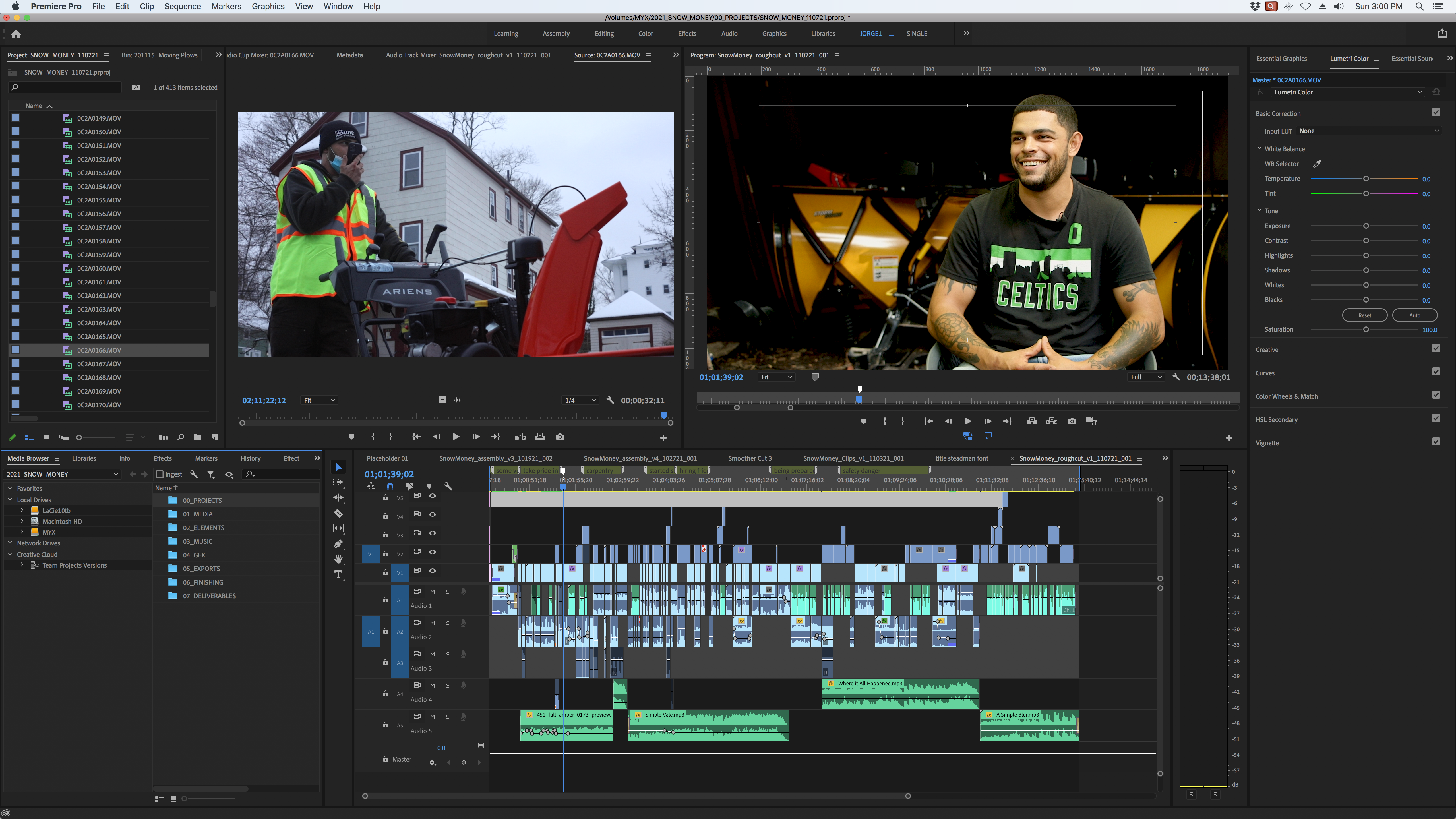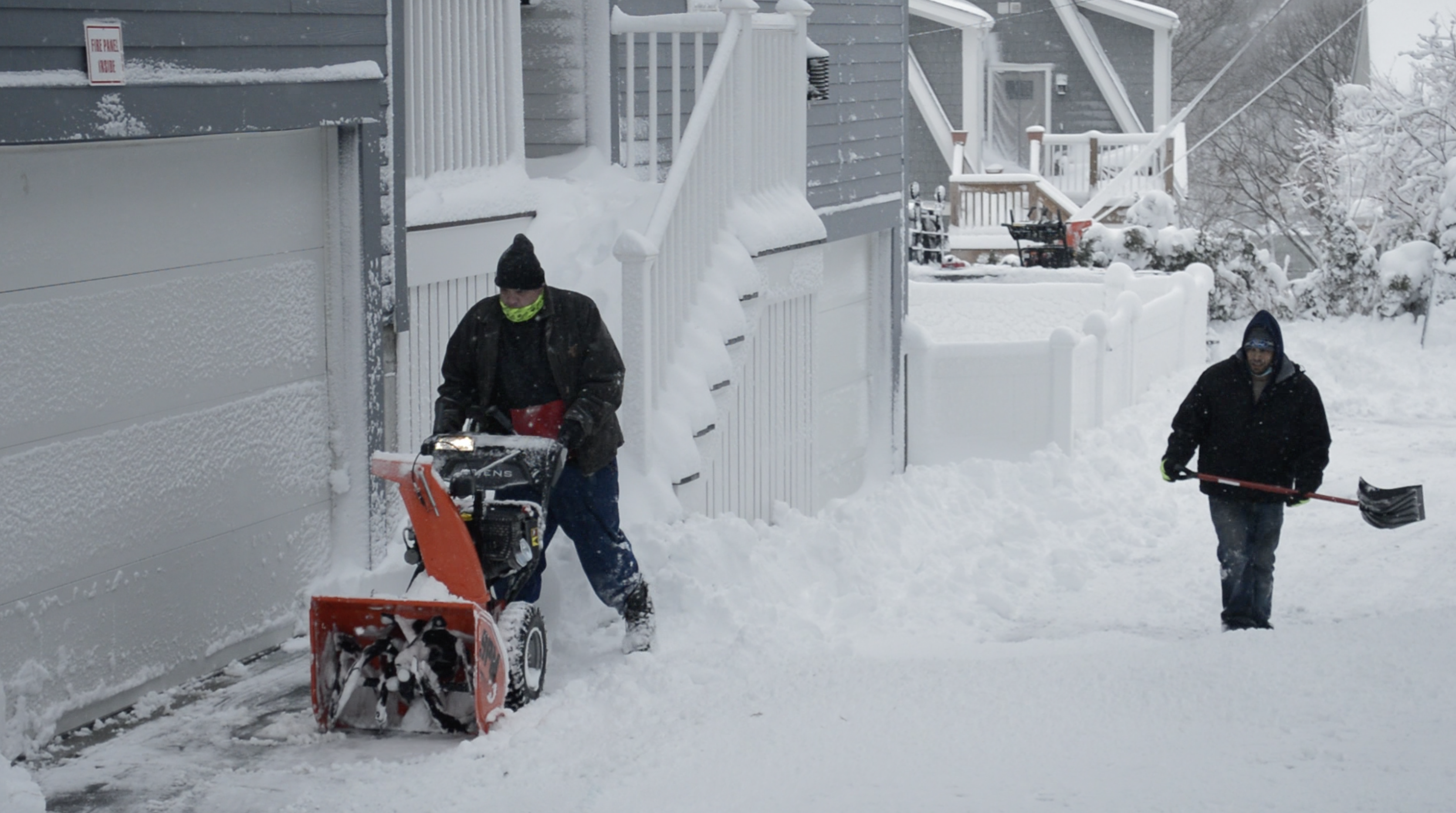
For most of my life, feedback made me anxious.
I was in third grade when my mom came home from a parent-teacher conference with this pronouncement. “Your teacher said your math skills need improvement, so I’m going to find you a tutor.” For countless Saturday evenings after that, I sat for an hour over number problems with this expectation: Do exactly what the math tutor said.
Not only was I being schooled in math, but in what it meant to get feedback: Needing it meant there was a problem, and it took experts to fix that problem.
Fast forward to the present day. I have just graduated from Boston University’s journalism master’s program and am making my first film, a 13-minute documentary called “Snow Money.” It follows a snow plower’s journey to buying his first home, and how wetter, more unpredictable and severe winter weather compromises his dream. It’s what is, in film parlance, called a short — yet my feedback process has turned it into “the film that never ends.” It’s been two years since I started and, according to one of my professors, that means I haven’t really completed my master’s.
I’ve gotten a lot of feedback in my life. I spent several years as Toastmaster. I’ve written for The Boston Globe and Nieman Storyboard. I’ve worked on the TV side of WGBH in Boston. I love writing, and have always gotten a handle on the story if I worked long and hard enough. But for some reason, this film script eluded me. For the first time, maybe since third grade, I really felt like I had no idea what I was doing. Every cut I made felt wrong, and it would cue an inner voice that focused on my inexperience. The solution: find another expert.
When guidance becomes garble
For a year and a half of working on “Snow Money,” this was the process: I or my film editor created a rough cut of the film, and I then sent it to any film or TV-related person I could — colleagues, professors, past high school teachers, and people I networked with when looking for a job. They responded with a variety of suggestions. I called my film editor to push our deadline back so we could use them. I created yet another cut and sent it out, meaning the whole process started again. It was a never-ending slog, and I couldn’t wait to be done with it.
I wondered along the way if I should just turn off the feedback and start listening to my own creative gut. But then another email would suck me right back into my insecurity. “They’re way more experienced than me,” the voice would say. “They know better.”
Two years into the project, I reached a point where I just wanted the project to be finished, so I started to ignore most of the feedback I was getting. I thought we were one last cut away from sending the film to the final finishing stages.
Then two organizations surprised me with grants to fund the film — and each assigned me a mentor.
Before my first conversation with one of them, from the Pulitzer Center, I remember being so excited to report that I was practically done with the project! But the conversation took a totally different turn:
Mentor: “It’s good — but not good enough for a film festival.”
Me: “Okay, what needs to change?”
Mentor: “Well, for starters, you need way more footage of your subject actually plowing snow. I mean your film is called ‘Snow Money,’ right? And then …”
Me (in my head): “Oh no, AGAIN!?”
Panic crept in. Now I had more feedback – feedback I knew I had to accept because they were definitely experts and their advice came with money. I also knew that my mentor wasn’t going to accept a sub-par piece.
What to do? I’d told my film editor we were practically done; I was embarrassed to even think about pushing the deadline again. Besides, I’d promised both funding organizations that I’d finish everything in less than two months. And yet, here I was with a film that wasn’t good enough to send to film festivals, let alone The New York Times — both aspirations I’d cited in my grant applications.
I closed my laptop and took a break. A few days later, I was watching a lesson from “Independent Filmmaking” by Indian-American filmmaker Mira Nair on MasterClass. She said something that blew my mind: “‘Monsoon Wedding’ was really made to please no one but myself.”
But after she sold her film to the Independent Film Channel (IFC) at the Cannes Film Festival marketplace, she watched it again — and wanted to edit it again: “It was just this feeling I had in the audience that I was, myself, getting impatient with (some scenes).” IFC thought the film was fine, but Nair convinced them to give her another $200,000 to let her go back into the edit. Nair sat alone with her story, “without anyone telling me, ‘This should go. That should go.’” and the outcome was the “Monsoon Wedding” we see today (it’s amazing, by the way).
Owning your decisions
It was at that moment that I realized I had completely lost myself as a creator. I took feedback like it was The Truth, and ignored the value in my own experiences as a nonfiction storyteller. The film was no longer my film, but a Frankenstein of a film, a mashup of all the different advice I’d gotten. No wonder nothing felt right.
Now I heard another internal voice: “I am the director. I decide how the film goes.”
I called my editor and told him we weren’t done. Empowered, I also transformed my context for feedback. Rather than a requirement or guarantee of success, feedback offered opportunities to try ideas on and see if they fit or not. It was like panning for gold. I sat one more time with the project, this time playing with it myself: Should I move the title slide here? Do I like this shot? The process became fun again! I went back into my mentor’s notes — this time on my terms — and came out with a new cut that I was excited about. I sent the project back to my primary mentors again instead of circulating it among multiple people.
After several more rounds of back-and-forth – the fastest revisions process I’ve ever experienced — my film editor and I locked the cut. At the time of this writing, it’s undergoing the last step of sound and color editing. It is the best work I could have produced at this time in my career, and I directed it.
The takeaway: As a filmmaker, journalist, writer — whatever kind of creative you are — remember: You are the creator of your piece. You get to decide how it goes. As for feedback? It is the best when you have many ideas to choose from. It’s in those moments when you really can see endless possibilities. And isn’t that why we all make this stuff to begin with?
- View this story on Field Notes












